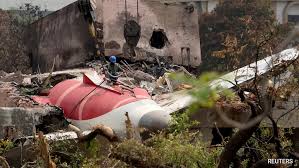
AI-171 Crash: Initial Probe Highlights Concerns Over Honeywell’s Fuel Control Switches

 :
| Updated On: 12-Jul-2025 @ 3:23 pm
:
| Updated On: 12-Jul-2025 @ 3:23 pmSHARE
The preliminary report on the tragic AI-171 crash involving a Boeing 787-8 aircraft near Ahmedabad on June 12, 2025, has focused on a critical component: the aircraft’s engine fuel control switches. According to the Aircraft Accident Investigation Bureau (AAIB), both engine fuel control switches moved from the ‘RUN’ to the ‘CUTOFF’ position within seconds of takeoff, causing the aircraft to lose altitude rapidly and crash. The incident led to the deaths of 241 passengers, with only one survivor. Despite this revelation, the report does not currently suggest any defects with the fuel control switches themselves or recommend immediate action for B787-8 or GE GEnx-1B engine operators and manufacturers.
The switches in question were manufactured by Honeywell, a US-based company. These specific switches—model number 4TL837-3D—were previously flagged in a 2018 Special Airworthiness Information Bulletin (SAIB) by the US Federal Aviation Administration (FAA). The concern involved a potential failure of the switch's locking mechanism, which could allow it to move between positions inadvertently. However, because of limited data, the FAA did not mandate inspections or issue an Airworthiness Directive (AD), treating the SAIB as an advisory instead.
The AAIB’s report notes that the design of this locking mechanism is consistent across various Boeing models, including the 737, 747, 767, and 787 Dreamliner. Despite the FAA’s earlier advisory, Air India reportedly did not implement the recommended inspections, citing the non-mandatory nature of the advisory. According to the SAIB, if the locking feature of the switch is disengaged, it may be moved accidentally without lifting the switch, which could result in unintended engine shutdown mid-flight. The report highlights this as a possible scenario in the crash, further supported by cockpit voice recordings in which one pilot questioned the other about the fuel cutoff, with the latter denying any manual action.
In the aftermath of the crash, a team led by the US National Transportation Safety Board (NTSB), with technical experts from Boeing, GE Aerospace, and the FAA, joined Indian investigators in Ahmedabad to assist with the probe. The report acknowledges their cooperation and contribution to the investigation.
Boeing, which manufactures the 787 Dreamliner, has responded with a statement from its President and CEO Kelly Ortberg, assuring full support to the investigation. Ortberg confirmed direct communication with Air India’s chairman and expressed Boeing’s commitment to assisting India’s Aircraft Accident Investigation Bureau throughout the process. As of now, Honeywell and GE Aerospace, the manufacturers of the fuel control switches and the aircraft engines respectively, have not released any official statement.
The 787 Dreamliner, known as Boeing’s most successful wide-body passenger jet, had maintained a relatively clean safety record until the AI-171 disaster. The aircraft is now under heightened scrutiny, following in the footsteps of the Boeing 737 MAX, which faced multiple fatal crashes and regulatory groundings in the past.
While the initial report stops short of drawing definitive conclusions or recommending broad safety changes, it does raise serious questions about oversight, maintenance, and the risks associated with seemingly minor technical faults.